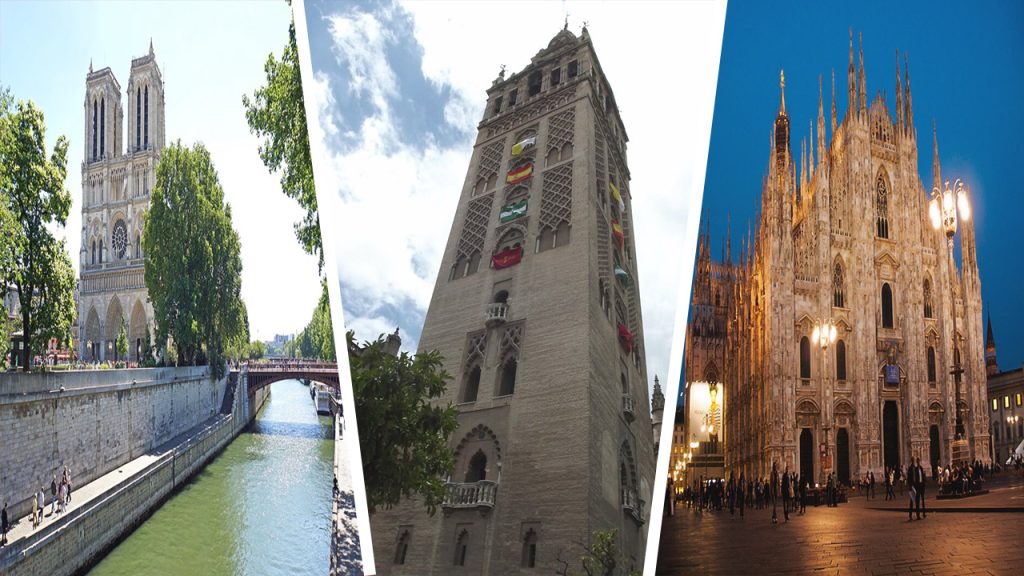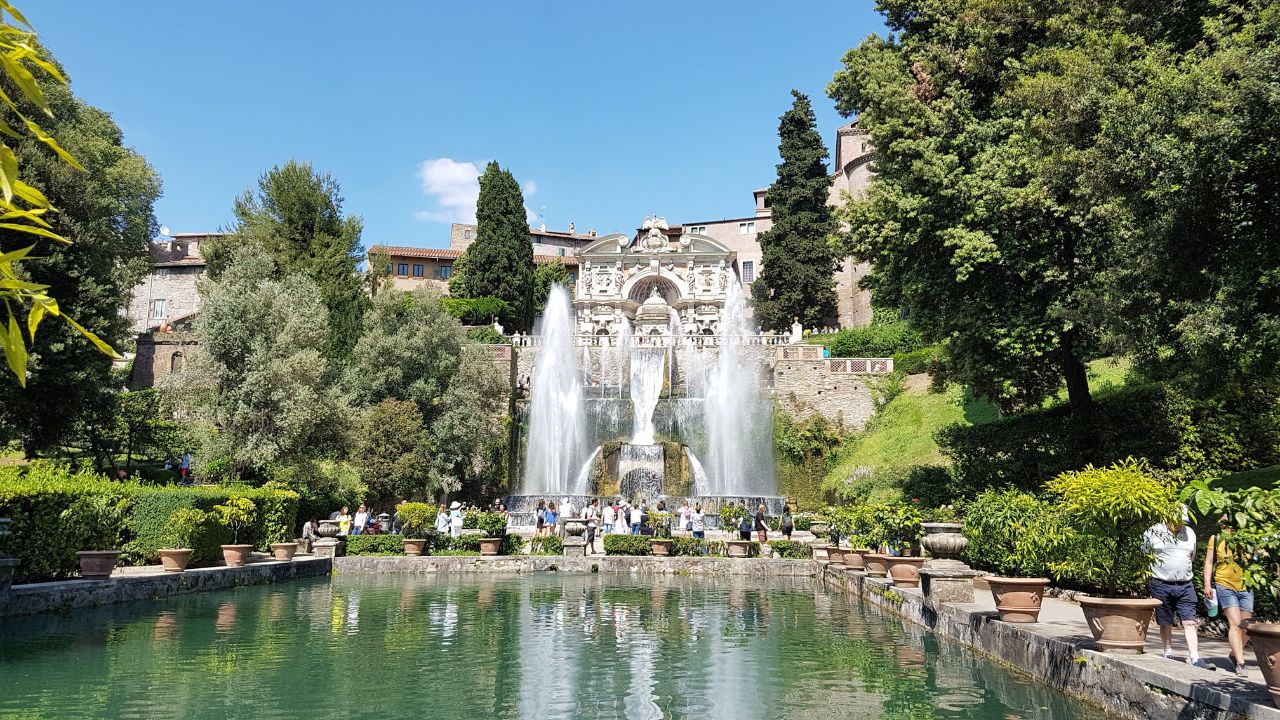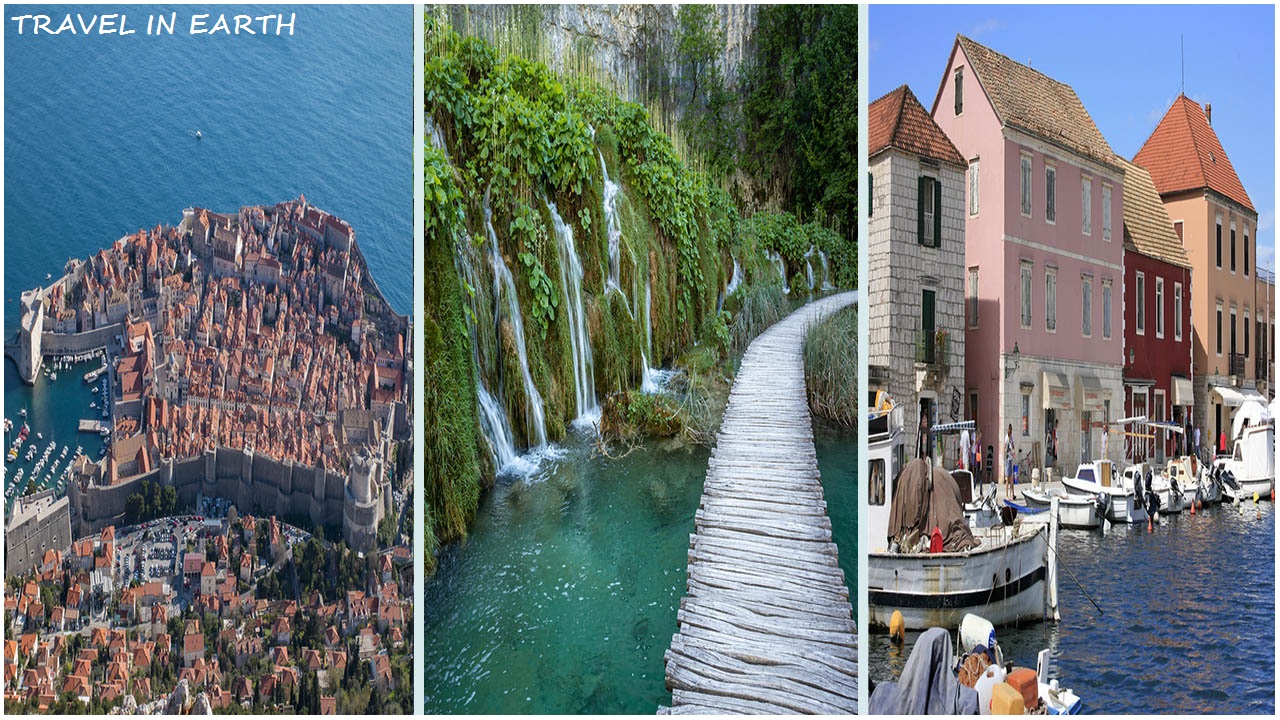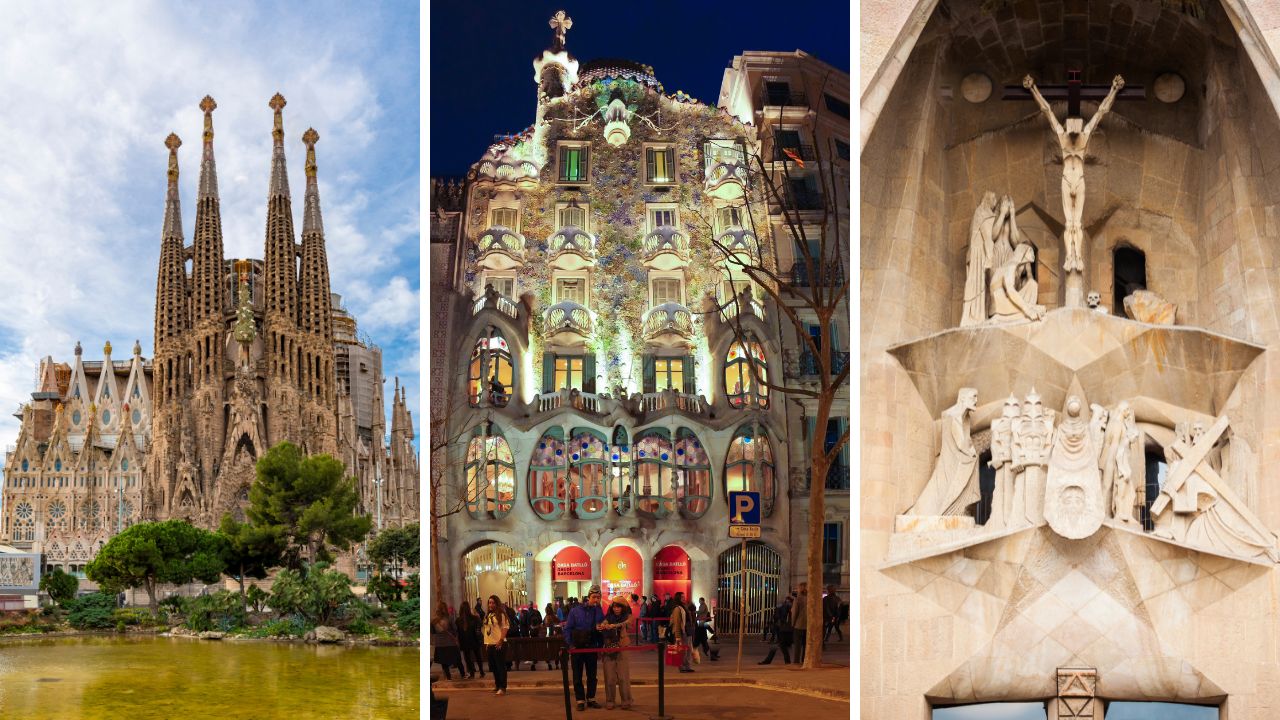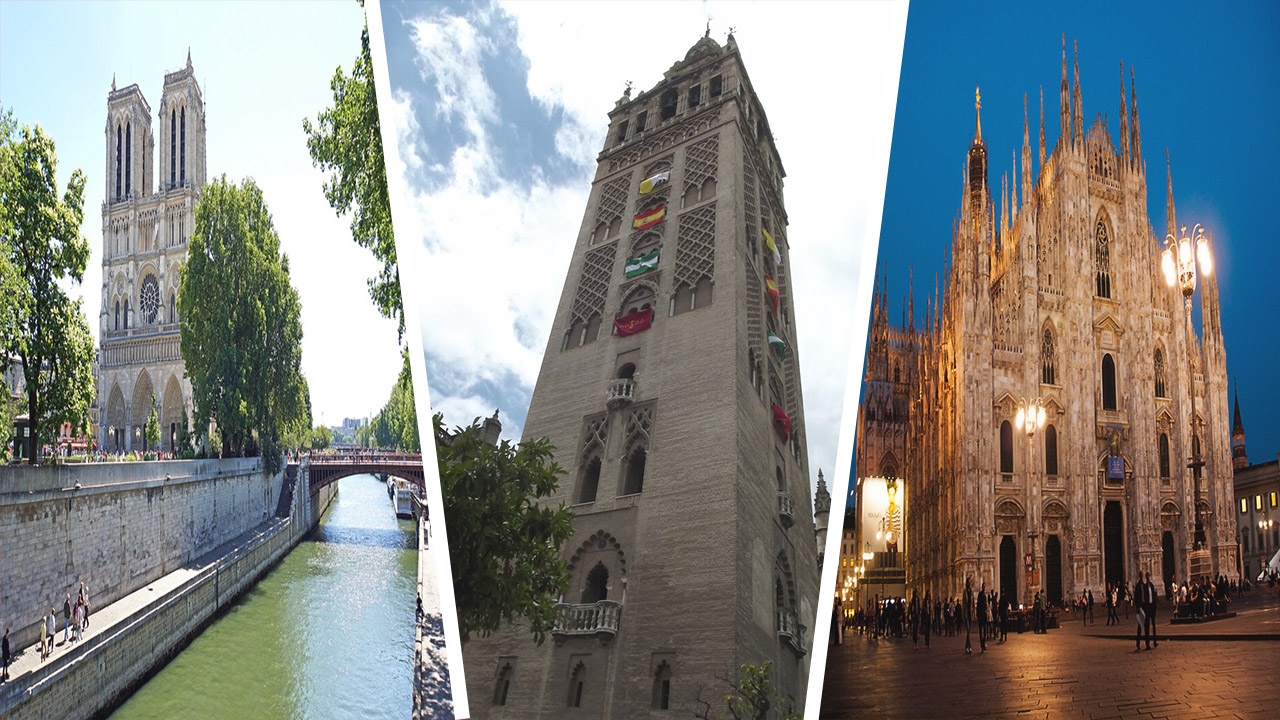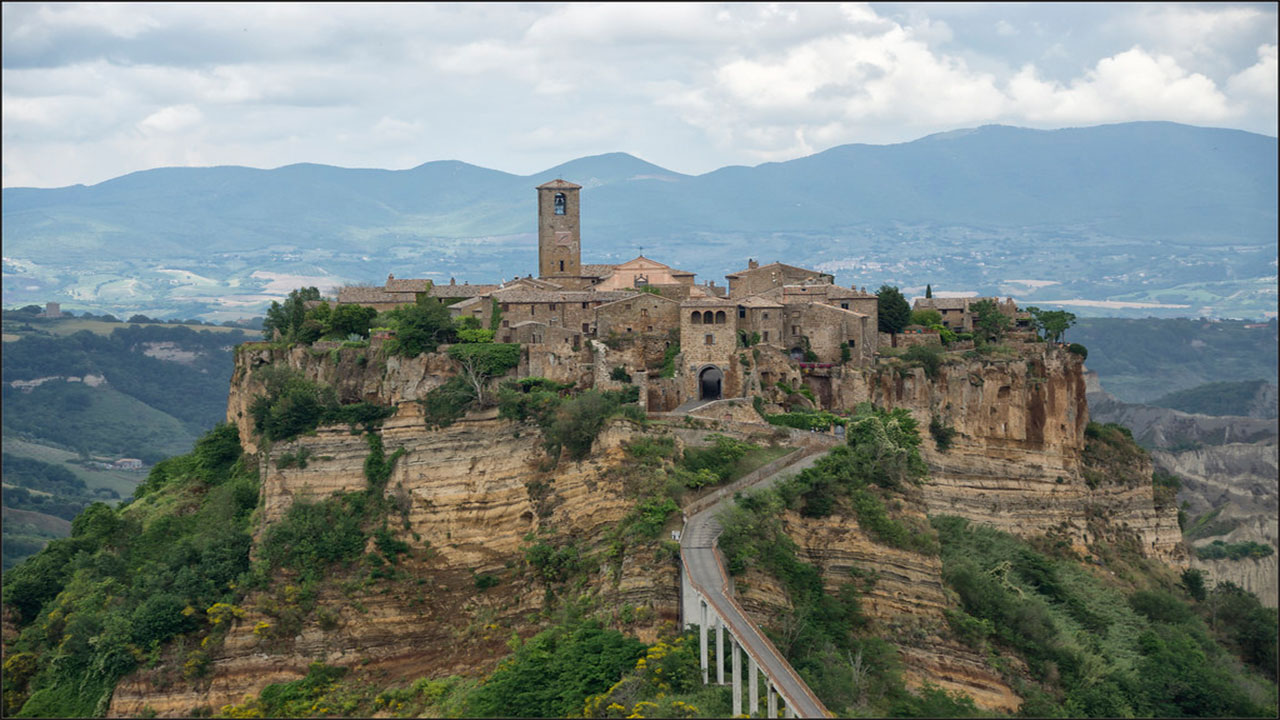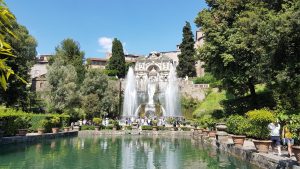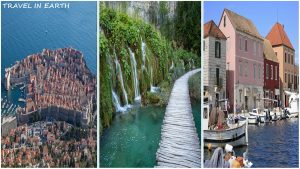Europe, with its rich history and deep-rooted Christian traditions, is home to some of the world’s most magnificent cathedrals. These awe-inspiring structures stand as testaments to human faith, architectural ingenuity, and artistic excellence. From the soaring spires of Gothic masterpieces to the ornate domes of Renaissance wonders, European cathedrals have captivated visitors for centuries.
In this article, we’ll explore ten of the most famous European Cathedrals. Every architectural marvel narrates a distinct tale, mirroring the cultural, historical, and spiritual circumstances of their construction. We’ll delve into their histories, examine their architectural features, and discuss their significance in both religious and secular contexts.
1. Notre-Dame de Paris, France

Our journey begins with one of the most beautiful and recognized cathedrals in the world: Notre-Dame de Paris.
Historical Background
Notre-Dame de Paris, meaning “Our Lady of Paris,” is a medieval Catholic cathedral located on the Île de la Cité in Paris, France. Bishop Maurice de Sully started construction in 1163 and completed it largely by 1260, although modifications continued over the centuries.
Architectural Style
Notre-Dame is considered one of the finest examples of French Gothic architecture. Its groundbreaking use of the rib vault and flying buttress, along with its enormous and colorful rose windows, made it one of the first buildings in the world to use the flying buttress extensively.
Key Features
- The Western Façade is composed of three wide portals, a gallery of kings, a rose window, and two towers.
- Flying Buttresses: Allow the walls to be higher and thinner, with more windows.
- Rose Windows: Over the main portals, there are three enormous round stained-glass windows.
- Bell Towers: The cathedral’s famous bell, the Emmanuel, is housed in the north tower.
- Spire: Eugène Viollet-le-Duc removed the original 13th-century spire in the 18th century and replaced it in the 19th century.
Cultural Significance
Notre-Dame has played a central role in French history and culture. It has been the site of many royal weddings, coronations, and funerals. The cathedral also inspired Victor Hugo’s famous novel “The Hunchback of Notre-Dame” (1831), which helped spur a major restoration project in the 19th century.
Recent Events
In April 2019, Notre-Dame suffered a devastating fire that destroyed the spire and most of the roof. An ambitious restoration project is currently underway, with plans to reopen the cathedral to the public in 2024.
Visitor Information
- Location: Île de la Cité, Paris, France.
- Current Status: Closed for restoration (as of 2023).
- Projected Reopening: 2024.
2. St. Peter’s Basilica, Vatican City

Our second famous cathedral takes us to the heart of the Catholic Church: St. Peter’s Basilica in Vatican City.
Historical Background
St. Peter’s Basilica is the largest church in the world and the center of Catholicism. Built between 1506 and 1626, the current basilica replaced the original 4th-century church, which stood over what is believed to be the burial site of Saint Peter, one of Jesus’s apostles.
Architectural Style
The basilica is a Renaissance and Baroque masterpiece, designed by several famous architects, including Bramante, Michelangelo, and Bernini. Its immense scale and lavish decoration make it one of the most impressive buildings in the world.
Key Features
- Dome: At 136.57 meters (448.1 ft), it’s the tallest dome in the world, designed by Michelangelo.
- St. Peter’s Square: The vast plaza in front of the basilica, designed by Bernini.
- Baldachin, a large Baroque canopy over the papal altar, was also designed by Bernini.
- Pietà: Michelangelo’s famous sculpture depicting the body of Jesus on the lap of Mary.
- St. Peter’s Tomb: Located directly beneath the high altar.
Cultural and Religious Significance
St. Peter’s Basilica, the principal church of the Catholic faith, holds immense religious significance. It’s the site of important ceremonies presided over by the Pope, and it’s a major pilgrimage destination for Catholics worldwide.
Artistic Treasures
The basilica houses numerous works of art, including sculptures, mosaics, and paintings by some of the most renowned artists of the Renaissance and Baroque periods.
Visitor Information
- Location: Vatican City is surrounded by Rome, Italy.
- Opening Hours: Daily, 7:00 AM to 6:30 PM (April to September), 7:00 AM to 5:00 PM (October to March)
- Entry: Free, but expect long queues; dress code enforced.
- Dome Access: Paid entry involves climbing stairs.
3. Sagrada Família, Barcelona, Spain

Our third cathedral takes us to Barcelona, where we encounter Antoni Gaudí’s extraordinary and still-unfinished masterpiece, the Sagrada Familia.
Historical Background
The Sagrada Família, or Basílica i Temple Expiatori de la Sagrada Família, is a large, unfinished Roman Catholic church in Barcelona. Construction began in 1882 under architect Francisco Paula de Villar, with Gaudí taking over in 1883. Gaudí devoted the last years of his life to the project, and it has been under construction ever since.
Architectural Style
The Sagrada Família is a unique blend of Gothic and Art Nouveau forms, infused with Gaudí’s distinctive organic style. It’s known for its innovative structural solutions and its integration of nature-inspired forms.
Key Features
- Facades: Three monumental facades (Nativity, Passion, and Glory) telling the story of Christ’s life.
- Towers: When completed, it will have 18 towers, including 12 for the apostles, 4 for the evangelists, one for Mary, and the tallest for Jesus Christ.
- Interior Forest: Tree-like columns and a light-filled canopy give the interior a forest-like appearance.
- Stained Glass: vibrant, abstract stained glass windows that bathe the interior in colorful light.
- The Crypt houses Gaudí’s tomb and a museum about the basilica’s history and construction.
Ongoing Construction
Despite being under construction for over 140 years, the Sagrada Família is nearing completion. The COVID-19 pandemic’s impact may delay the current projected completion date of 2026, the centenary of Gaud’s death.
Cultural Impact
The Sagrada Família has become an icon of Barcelona and modern architecture. Pope Benedict XVI consecrated and proclaimed it a minor basilica in 2010, despite its incompleteness.
Visitor Information
- Location: Barcelona, Spain.
- Opening Hours: Daily, hours vary by season.
- Entry: Paid entry, advance booking recommended.
- Tower Access: An additional fee applies, providing panoramic views of Barcelona.
4. St. Paul’s Cathedral, London, England

Our fourth famous cathedral brings us to the heart of London, where St. Paul’s Cathedral has stood as a city icon for over three centuries.
Historical Background
Sir Christopher Wren designed and built the current St. Paul’s Cathedral between 1675 and 1710. The Great Fire of London in 1666 destroyed the Old St. Paul’s Cathedral, which it replaced. For over 1,400 years, a cathedral honoring St. Paul has occupied the site.
Architectural Style
St. Paul’s is a masterpiece of English Baroque architecture. Its design represents a break from the medieval Gothic style of its predecessor, showcasing Renaissance elements and Wren’s innovative architectural ideas.
Key Features
- Dome: The cathedral’s most recognizable feature; it’s one of the highest in the world at 111 meters (365 ft).
- Whispering Gallery: A circular walkway around the interior of the dome, known for its unique acoustics.
- Stone Gallery and Golden Gallery: outdoor viewing platforms offering panoramic views of London.
- Grand Organ: One of the largest in Europe, with nearly 7,000 pipes.
- Crypt: The final resting place of many notable figures, including Lord Nelson and the Duke of Wellington.
Historical Significance
St. Paul’s has played a central role in many significant national events, including the funerals of Lord Nelson, the Duke of Wellington, Sir Winston Churchill, and Margaret Thatcher. It was also the site of the wedding of Prince Charles and Lady Diana Spencer in 1981.
Wartime Resilience
During World War II, St. Paul’s became a symbol of British resistance. Despite the heavy bombing of London, the cathedral survived largely intact, standing defiantly amidst the destruction of the Blitz.
Visitor Information
- Location: City of London, England.
- Opening Hours: Monday to Saturday, 8:30 AM to 4:30 PM (last admission).
- Entry: Paid entry, with discounts for online bookings.
- Dome Access, which is included in the ticket price, entails climbing 528 steps.
5. Cologne Cathedral, Germany

Our fifth cathedral takes us to Germany, where the Cologne Cathedral (Kölner Dom) stands as one of the most impressive examples of Gothic architecture in Europe.
Historical Background
The 16th century halted the construction of Cologne Cathedral, leaving it unfinished for over 300 years. The 19th century saw the resumption of work, which culminated in its completion in 1880, adhering to the original medieval plan.
Architectural Style
Cologne Cathedral is a quintessential example of high Gothic architecture. Its massive twin spires, intricate tracery, and soaring vaulted ceilings embody the Gothic ideal of reaching towards the heavens.
Key Features
- Twin Spires: At 157 meters (515 feet) high, they dominate the Cologne skyline.
- Stained Glass Windows: Cover 10,000 square feet, including the famous South Transept window.
- Shrine of the Three Kings: A large gilded sarcophagus said to contain the remains of the Three Wise Men.
- Gero Cross: A large wooden crucifix from the 10th century, one of the oldest large crucifixes north of the Alps.
- The Treasury houses a collection of precious religious artifacts and artworks.
UNESCO World Heritage Site
In 1996, UNESCO added Cologne Cathedral to its World Heritage List, recognizing its outstanding universal value as a masterpiece of Gothic architecture and its testimony to the strength and persistence of Christian belief in medieval and modern Europe.
Survival and Restoration
Despite facing numerous bombs during World War II, the cathedral managed to remain intact, despite the destruction of much of the surrounding city. Since the war, extensive restoration work has been ongoing, with scaffolding serving as a near-permanent fixture on some parts of the exterior.
Visitor Information
- Location: Cologne, Germany.
- Opening Hours: Daily, November to April 6:00 AM to 7:30 PM, May to October 6:00 AM to 9:00 PM.
- Entry is free for the main cathedral; Tower Climb and Treasury have a fee.
- Tower Access: 533 steps to the viewing platform, which offers panoramic views of Cologne.
6. Milan Cathedral (Duomo di Milano), Italy

Our sixth cathedral brings us to Italy’s fashion capital, where the Milan Cathedral stands as a stunning example of Gothic architecture with distinctly Italian flair.
Historical Background
The construction of Milan Cathedral began in 1386 under the Visconti family’s rule. However, like many magnificent cathedrals, it took centuries to complete. Only the 20th century saw the completion of the final details, while the main spire remained incomplete until 1762.
Architectural Style
Milan Cathedral is the largest church in Italy (St. Peter’s Basilica is larger but located in Vatican City) and one of the largest Gothic cathedrals in the world. It combines Gothic architecture with Lombard traditions, as well as some Renaissance and Neo-Gothic elements that have been added over its long construction period.
Key Features
- 135 spires and 3,400 statues adorn the cathedral, forming a forest of pinnacles on its roof.
- Madonnina: A golden statue of Mary atop the main spire, a symbol of Milan.
- Stained Glass Windows: The cathedral is home to some of the world’s largest stained glass windows.
- Sundial: A brass strip on the floor serves as a meridian line, installed in the 18th century.
- Crypt: contains the tomb of St. Charles Borromeo, a 16th-century cardinal and archbishop of Milan.
Cultural Significance
The Duomo di Milano is not just a religious symbol but also a civic one, representing the pride and creativity of the Milanese people. It has been the site of many important events in Italian history and continues to be a central gathering place for both religious and secular occasions.
Rooftop Terraces
One of the unique features of Milan Cathedral is the ability for visitors to access the roof. The terraces offer an up-close view of the intricate Gothic spires and statues, as well as panoramic views of Milan.
Visitor Information
- Location: Piazza del Duomo, Milan, Italy.
- Opening Hours: Daily, cathedral 8:00 AM to 7:00 PM, rooftop terraces 9:00 AM to 7:00 PM (hours may vary by season).
- Entry is free for the cathedral; paid entry is required for the rooftop terraces and archaeological area.
- Rooftop Access: Available via stairs or elevator (additional fee).
7. Westminster Abbey, London, England

Our seventh famous cathedral takes us back to London, where Westminster Abbey stands as a cornerstone of British history and monarchy.
Historical Background
Westminster Abbey, officially titled the Collegiate Church of Saint Peter at Westminster, has a history stretching back over a thousand years. Henry III started the present church in 1245 and it has served as the coronation church since 1066.
Architectural Style
The English Gothic style, specifically Early English Gothic, is the primary building style of Westminster Abbey. However, it has undergone several additions and renovations over the centuries, incorporating elements from later architectural periods.
Key Features
- Henry VII Lady Chapel: considered the last outstanding masterpiece of English medieval architecture, known for its fan-vaulted ceiling.
- Poet’s Corner: A section of the South Transept where many famous writers, poets, and artists are buried or commemorated.
- Coronation Chair: Used in every coronation since 1308, including King Charles III’s in 2023.
- Royal Tombs: The final resting place of 30 kings and queens, starting with Edward the Confessor.
- Chapter House: An octagonal room with a vaulted ceiling and medieval tile floor, used for monks’ daily meetings.
Historical Significance
Westminster Abbey has been the site of every English and British coronation since William the Conqueror in 1066. It has also hosted 16 royal weddings, including that of Prince William and Catherine Middleton in 2011.
A Working Church
Despite its role as a major tourist attraction, Westminster Abbey remains a working church with daily services. It’s also the burial site of many notable figures from British history, including scientists, politicians, and monarchs.
Visitor Information
- Location: Westminster, London, England.
- Opening Hours: Monday to Saturday, hours vary by season (closed on Sundays for worship only).
- Entry: Paid, with online booking available.
- Audio guides are included with admission; verger-led tours are available for an extra fee.
8. Chartres Cathedral, France

Our eighth cathedral brings us to the charming town of Chartres, France, home to one of the finest examples of French Gothic architecture.
Historical Background
Most of the construction of the current Chartres Cathedral, officially known as the Cathedral of Our Lady of Chartres (Cathédrale Notre-Dame de Chartres), took place between 1194 and 1220. A fire in 1194 destroyed a Romanesque church, but the new building incorporated its west facade.
Architectural Style
Chartres Cathedral is considered one of the high points of French Gothic art. Its rapid construction resulted in an unusual unity and purity of design, making it one of the best examples of the High Gothic style.
Key Features
- Chartres is known for its stained glass, with over 150 windows, most dating from 1210-1260.
- Spires: The two contrasting spires—one in Romanesque style, one in Gothic—are a unique feature.
- Labyrinth: A famous medieval labyrinth inlaid in the floor, used as a symbolic pilgrimage or for meditation.
- Sculpture: The cathedral is adorned with exquisite stone sculptures, particularly around the portals.
- Crypt: One of the largest in France, partly dating back to the original Romanesque church.
UNESCO World Heritage Site
In 1979, UNESCO inscribed Chartres Cathedral as one of the first sites in France. It’s considered a masterpiece of Gothic art and a testament to the power and wealth of 12th and 13th-century France.
The Sancta Camisa
The cathedral has been an important pilgrimage destination since the Middle Ages, largely due to its relic, the Sancta Camisa, believed to be the tunic worn by the Virgin Mary at Christ’s birth.
Recent Restoration
Since 2009, a controversial restoration project has been underway, cleaning the interior and restoring it to its original light color. This has sparked debate among art historians about preservation techniques and historical authenticity.
Visitor Information
- Location: Chartres, France (about 80 km southwest of Paris).
- Opening Hours: Daily, 8:30 AM to 7:30 PM (may vary by season).
- Entry: Free for the cathedral; small fee for tower access and crypt tours.
- Tours: Guided tours in multiple languages are available.
9. St. Stephen’s Cathedral (Stephansdom), Vienna, Austria

Our ninth cathedral takes us to the heart of Vienna, where St. Stephen’s Cathedral has stood as a symbol of Austrian identity for centuries.
Historical Background
The current Romanesque and Gothic form of the Stephansdom, as it’s known in German, dates back to the 14th century. However, a church has stood on this site since the 12th century. Over the years, the cathedral has witnessed many significant events in Austrian history.
Architectural Style
St. Stephen’s Cathedral is primarily Gothic in style, but it also incorporates Romanesque elements, particularly in its massive gate and the two Roman Towers. Its most recognizable feature, the south tower, is one of the finest examples of Gothic craftsmanship.
Key Features
- South Tower (Steffl): At 136.44 meters (447.6 ft), it dominates Vienna’s skyline.
- The Pummerin Bell, housed in the north tower, is the second-largest free-swinging chimed church bell in Europe.
- Roof: Covered with 230,000 glazed tiles, forming a mosaic of the double-headed eagle, a symbol of the Habsburg empire.
- Giant’s Door: The main entrance, a Romanesque portal with intricate carvings.
- Catacombs: A vast network of burial chambers beneath the cathedral.
Historical Significance
The cathedral has been witness to many important events in Austrian history. Mozart’s marriage and funeral took place here. The catacombs have buried several members of the Habsburg family.
World War II and Restoration
During World War II, fire severely damaged St. Stephen’s, destroying much of its interior. However, extensive restoration efforts led to its full reopening by 1952. In the post-war period, the cathedral was rebuilt as a symbol of Austrian resilience and reconstruction.
Visitor Information
- Location: Stephansplatz, Vienna, Austria.
- Opening Hours: Main cathedral is open daily, 6:00 AM to 10:00 PM.
- Entry: Free for the main cathedral; paid tours available for towers, catacombs, and treasury.
- South Tower: 343 steps to the watch room, offering panoramic views of Vienna.
10. Seville Cathedral, Spain

Our final cathedral brings us to the heart of Andalusia in southern Spain, where the Seville Cathedral stands as the world’s largest Gothic cathedral.
Historical Background
Following the Christian reconquest of Seville, construction of the Seville Cathedral began in 1401 on the site of a former mosque. The early 16th century saw its completion. The builders’ famous declaration, “Let us build a church so beautiful and so great that those who see it built will think we were mad,” sums up their ambition.
Architectural Style
The cathedral is primarily Gothic, but it also incorporates elements from other styles, including Moorish influences from the original mosque, particularly in the bell tower (La Giralda). Later centuries added Renaissance, Baroque, and Neo-Gothic elements.
Key Features
- La Giralda: The bell tower, which was originally the mosque’s minaret, stands at 104 meters (343 feet).
- Central Nave: At 42 meters (138 feet) high, it’s one of the highest in Spain and houses the Main Chapel and choir.
- Christopher Columbus Tomb: A monumental tomb said to hold the remains of the famous explorer.
- Retablo Mayor: The main altarpiece, which is considered the largest in the world, depicts scenes from Christ’s life.
- Royal Chapel: Contains the tombs of several monarchs, including Ferdinand III of Castile.
UNESCO World Heritage Site
In 1987, the cathedral, the Alcázar, and the General Archive of the Indies received registration as World Heritage Sites, underscoring the importance of Seville’s monumental complex.
Art Collection
The cathedral houses an impressive collection of art, including works by Murillo, Goya, Pedro de Campaña, and others. Its library contains over 7,000 books, including volumes from Christopher Columbus’s personal library.
Visitor Information
- Location: Av. de la Constitución, Seville, Spain.
- Opening Hours: Monday 11:00 AM to 3:30 PM, Tuesday to Saturday 11:00 AM to 5:00 PM, Sunday 2:30 PM to 6:00 PM (hours may vary by season).
- Paid entry includes access to the Giralda Tower.
- Rooftop Tours: Available for an additional fee, offering unique views of the cathedral’s architecture.
Conclusion
These ten famous European cathedrals represent some of the finest achievements in architecture, art, and human spirituality. Each tells a unique story, not just of religious devotion but of the communities, cultures, and historical periods that created them.
From the Gothic splendor of Notre-Dame de Paris and Chartres to the Baroque grandeur of St. Peter’s Basilica to the ongoing work of the Sagrada Família, these cathedrals span centuries of architectural evolution. They stand as testaments to human creativity, engineering prowess, and the enduring power of faith.
These cathedrals are more than just places of worship. They are libraries of history, galleries of art, and symbols of national and cultural identity. Whether their architectural beauty, historical significance, or spiritual importance draw you in, visiting these cathedrals offers a profound connection to Europe’s rich cultural heritage.

